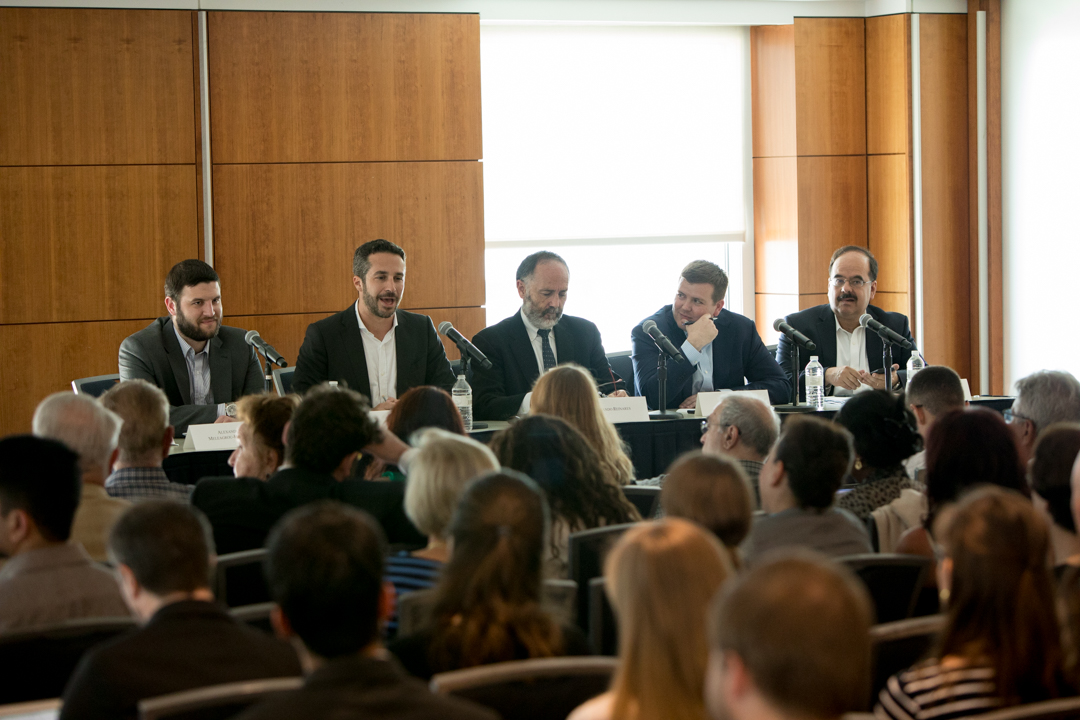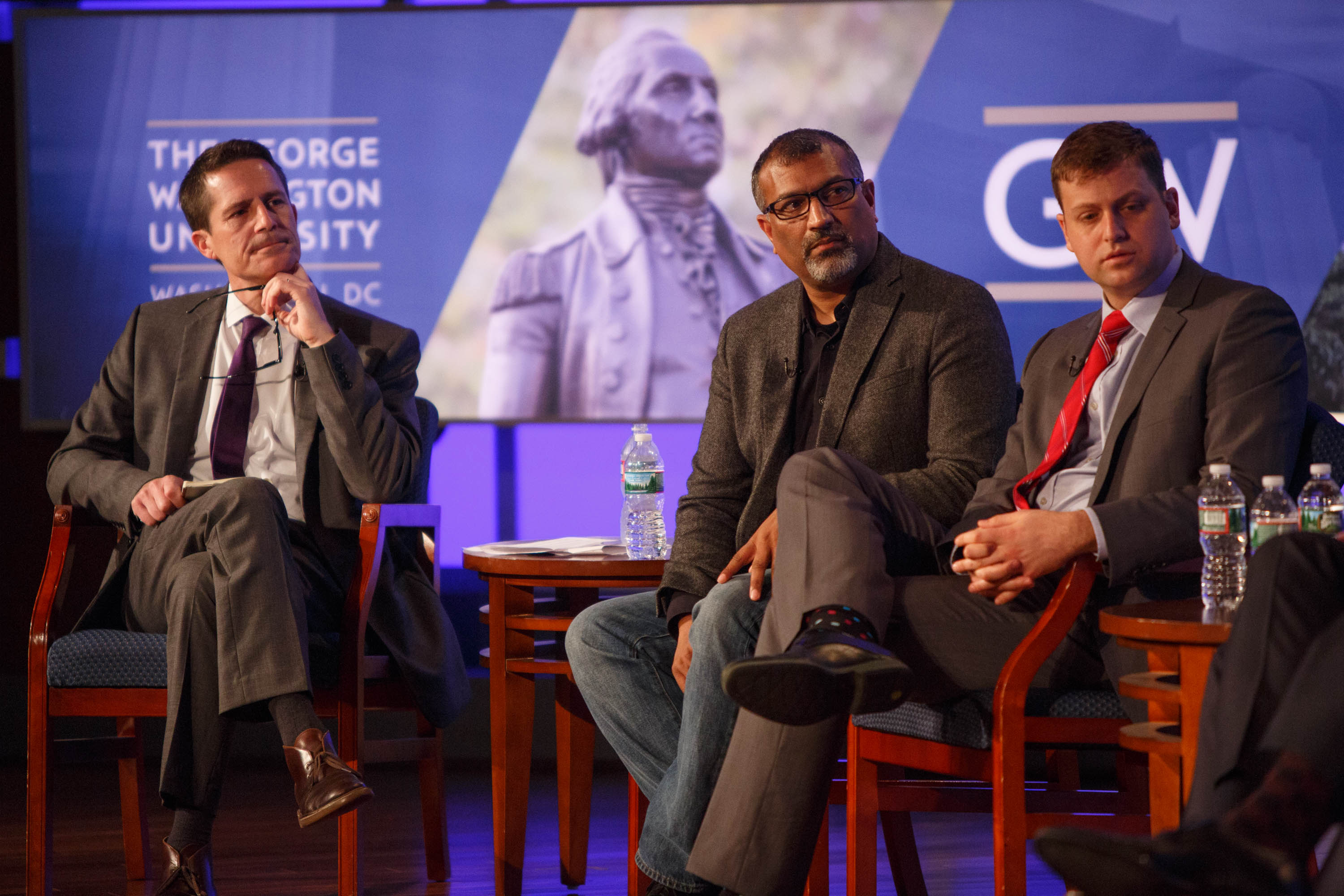By Kristen Mitchell
In the 51 terrorist plots carried out by jihadists in Europe and North America in the past three years, 73 percent of attackers were citizens of the country where the attack took place, according to a report released by the George Washington University’s Program on Extremism this week.
This finding further confirms the homegrown nature of the current threat in the West, experts say.
The report, “Fear thy Neighbor: Radicalization and Jihadist Attacks in the West,” is a comprehensive look at jihadist-motivated terrorist attacks carried out in Europe and North America since the Islamic State declared a caliphate in June 2014.
In Europe, extremist hubs drive radicalization, said Lorenzo Vidino, Program on Extremism director and an author of the new report. The Internet is often categorized as a driver for radicalization, but charismatic and militant figures also contribute to higher concentrations of jihadists in otherwise “unremarkable” European cities, Dr. Vidino said.
“Radicalization is often about who you know. Social conditions are crucially important,” he said Wednesday during a panel discussion on the new report at the Elliott School of International Affairs. “The formation of hubs, of hot spots around these networks, around these individuals is what determines the different levels of radicalization.”
The Internet plays a crucial role in European radicalization, but it is only one factor of a complex issue, Dr. Vidino said.
Terror plots in the West are on the rise as ISIS faces significant territorial losses in Iraq and Syria. The report found since June 2014 France has seen the largest number of attacks with 17, followed by the United States with 16, Germany with six and the United Kingdom with four.
The report found that 73 percent of attackers were citizens of the country in which they committed the attack. Another 14 percent were either legal residents or legitimate visitors from neighboring countries, and 5 percent were refugees or asylum seekers at the time of attack. Six percent were residing in the country illegally at the time.
In the United States, ISIS recruits most often want to travel to the Syria and Iraq, said Seamus Hughes, deputy director of the Program on Extremism. However, jihadists are increasingly encouraging them to stay in the United States and carry out attacks. Only about 30 percent of ISIS recruits in America want to commit terrorist acts in the United States. Over the last few months, that number has been rising, he said.
“They’re handholding these Americans to commit attacks, primarily focusing on domestic plotting and primarily directing those folks away from traveling to Syria and Iraq and more toward doing when you can where you are,” Mr. Hughes said.
Eight percent of terrorist attacks were carried out by individuals acting under direct orders of the Islamic State, according to the report. Twenty-six percent of terrorist acts were carried out by individuals not connected to but inspired by jihadist groups, and 66 percent were carried out by people who had some form of connection to a terrorist group but acted independently.
For the most part, the United States does not have jihadist hot spots the way European countries do. Amb. Alberto Fernandez, vice president of the Middle East Media Research Institute, attributed this different culturaly attitude to identity and assimilation.
In the United States, people can “be both American and whatever else they want to be,” Mr. Fernandez said.
“This is a narrative that has real power, just like the revolutionary narrative of the Islamic State. It’s something that I think has been fraying but is something that needs to be nurtured and continue,” he said. “Obviously other countries which have real problems with identity, especially countries in the European Union, I think they have a real identity, ideological problem about who they are and what they are.”
Of the 125 people in the United States charged with crimes related to ISIS terrorism, 72 pleaded guilty or were convinced, according to the report. Those individuals are serving an average 13.3-year prison sentence, Mr. Hughes said. The West needs to focus on developing a public policy approach to deal with these individuals once they are released.
“There’s not a process to disengage them in prison, there’s not necessarily a safety net or system involved when they get out,” he said. “We’ve seen a wave of individuals who were arrested for al-Qaida activities 15 years ago, and we’re going to have to address that from a public policy question.”
Dr. Vidino authored the report with Francesco Marone and Eva Entenmann. The report was published in co-operation with the Italian Institute for International Political Studies and the International Centre for Counter-Terrorism.
Additional key findings in the report included:
- At least 57 percent of jihadist attackers had a prior criminal background.
- The average age of attackers is not unusually young at 27.3 years.
- Only 18 percent of attackers are known to have previously been foreign fighters. However, these individuals tended to be involved in the episodes with the highest lethality.
- Some 63 percent of attackers pledged allegiance to a jihadist group, almost always the Islamic State, during or before the attack.
- Jihadist groups, almost always the Islamic State, claimed 38 percent of attacks.
Dick Schoff, national coordinator for Security and Counterterrorism in the Netherlands, gave an opening address prior to a discussion on the future of the Islamic State group in the West in the City View room Wednesday afternoon.




